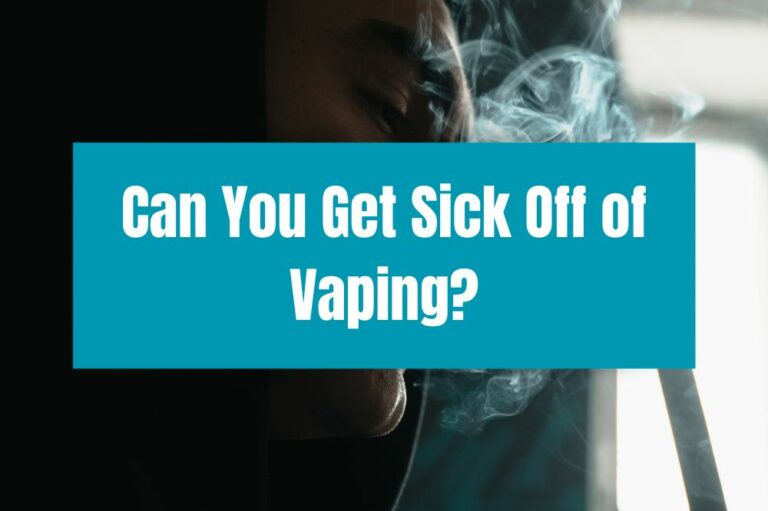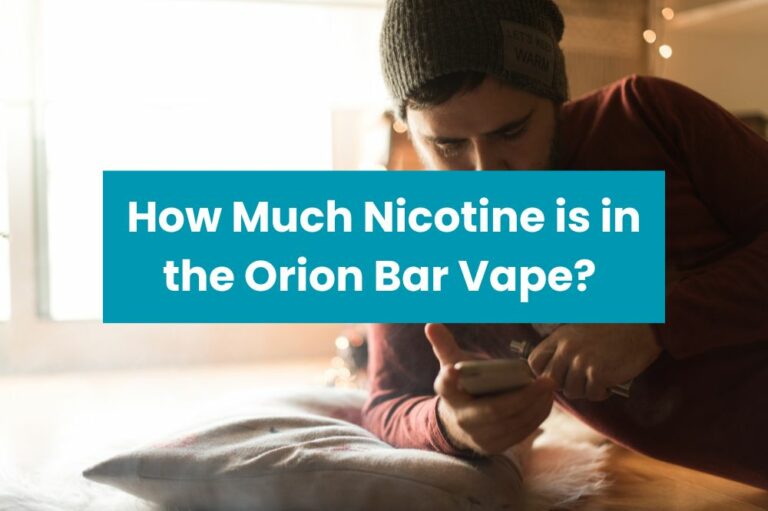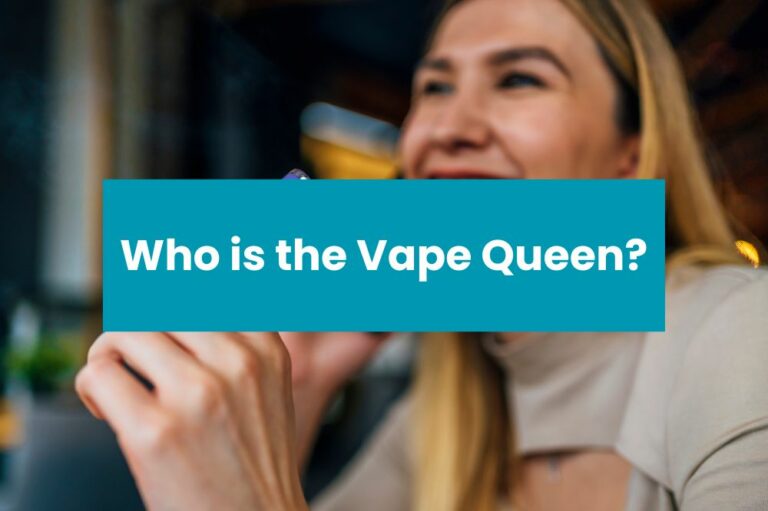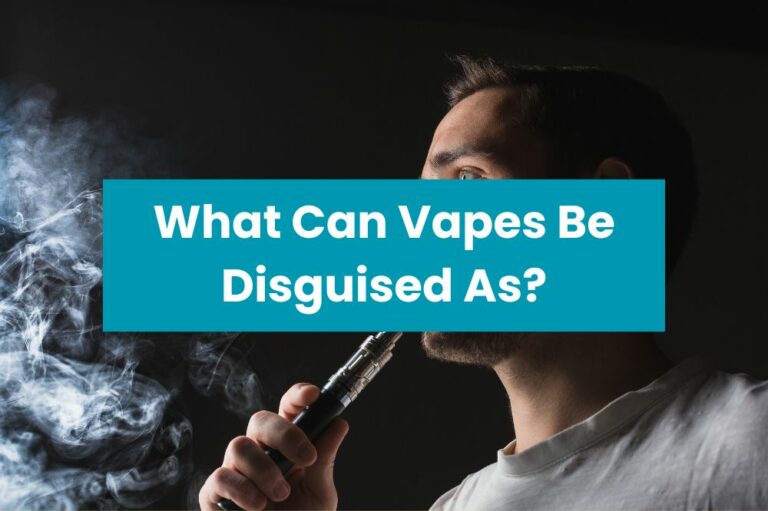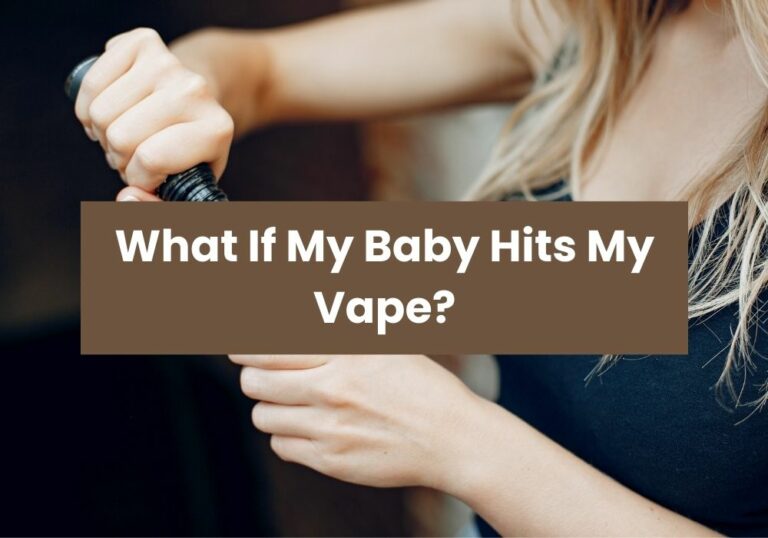Is Electric Vape Smoke Harmful?
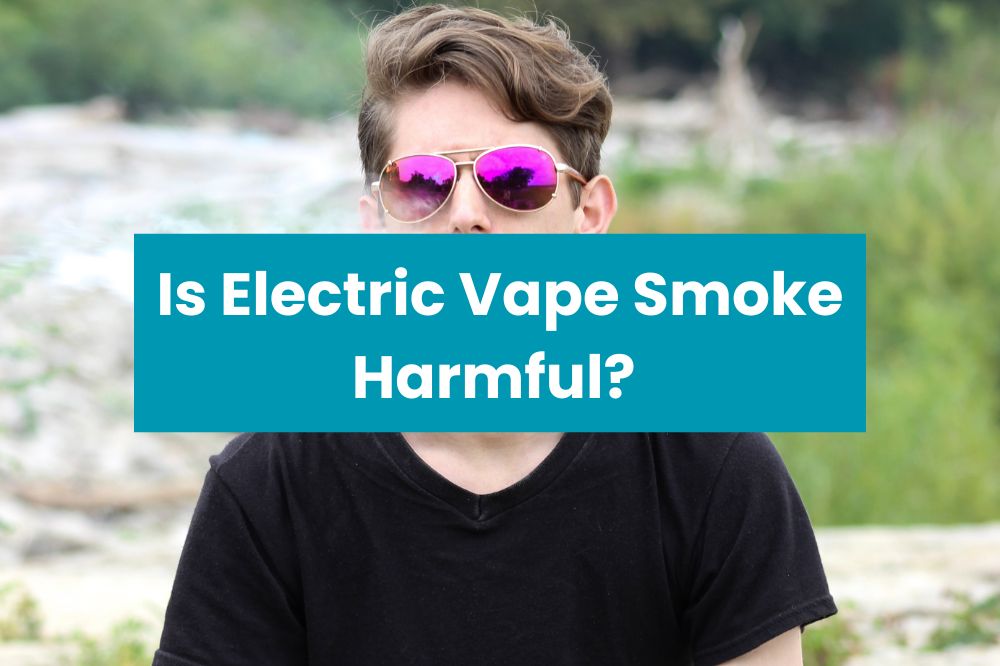
If you’re a smoker or someone who’s interested in vaping, you may have wondered whether electric vape smoke is harmful. While vaping is often marketed as a safer alternative to smoking traditional cigarettes, it’s important to understand the potential risks associated with this habit.
According to Johns Hopkins Medicine, vaping is less harmful than smoking, but it’s still not safe. E-cigarettes heat nicotine, flavorings, and other chemicals to create an aerosol that you inhale. While e-cigarettes don’t contain the same harmful chemicals as traditional cigarettes, they still contain nicotine, which is addictive and can harm the developing brains of teens, young adults, and fetuses in women who vape while pregnant.
The Centers for Disease Control and Prevention (CDC) also notes that e-cigarettes are not safe for youth, young adults, and pregnant women, as well as adults who do not currently use tobacco products. While e-cigarettes may have the potential to benefit adult smokers who are not pregnant if used as a complete substitute for regular cigarettes and other smoked tobacco products, they are not completely risk-free. It’s important to understand the potential risks associated with vaping before deciding whether or not to use e-cigarettes.
Understanding Electric Vapes
If you are considering using an electric vape, it is important to understand what it is and how it works. An electric vape is a type of electronic cigarette that heats up a liquid solution, usually containing nicotine, to create an aerosol that you inhale. The liquid solution, also known as e-liquid or vape juice, can come in a variety of flavors and nicotine strengths.
Unlike traditional cigarettes, electric vapes do not produce smoke. Instead, they produce an aerosol that is often referred to as vapor. This vapor can contain a variety of chemicals, including nicotine, flavorings, and other additives.
SPIRITBAR Katana BP10000
- Slender, leather-textured body reminiscent of a katana handle for an authentic samurai feel
- Unique samurai-inspired e-liquid flavor - fruity yet not too sweet, with a luxurious, elegant aroma
- Powerful 650mAh rechargeable battery for extended vaping time
- Large 18ml e-liquid capacity and 10,000 puff capacity
- Advanced mesh coil and e-liquid & power display screens for optimal vaping experience
The special juice captures the essence of the samurai spirit with its rich, smoothly pulsating flavor that brings new satisfaction with every puff. The device's slender, leather-textured design evokes the grip of a samurai's katana, making this product a perfect choice for beginner vapors.
It is important to note that while electric vapes are often marketed as a safer alternative to traditional cigarettes, they are not without their risks. The long-term health effects of using electric vapes are not yet clear, and there have been reports of serious lung disease in some people who use these devices.
If you are considering using an electric vape, it is important to do your research and understand the potential risks and benefits. Talk to your doctor or a qualified healthcare professional to learn more about the potential health effects of using electric vapes.
Chemical Composition of Vape Smoke
When you use an electronic vape, you inhale and exhale a cloud of aerosol, which is often called “vape smoke.” But what exactly is in this cloud of smoke?
According to the American Lung Association, the “e-juice” that fills the cartridges usually contains nicotine (which is extracted from tobacco), propylene glycol, flavorings, and other chemicals. Studies have found that even e-cigarettes claiming to be nicotine-free contain trace amounts of nicotine. Additionally, when the e-liquid heats up, more toxic chemicals are formed.
A study published in the National Center for Biotechnology Information found that e-cigarettes often contain ingredients such as propylene glycol (PG) and glycerol, mixed with concentrated flavors and, optionally, a variable percentage of nicotine. Quantitative and qualitative studies have identified a wide variety of chemical components in the cartridges, refill solutions, and aerosols of e-cigarettes.
SPIRITBAR Jack’s Flask 9000 Puffs
- Stylish pirate flask-shaped body providing an exciting vaping experience
- Delivering up to 9000 puffs per device
- 20ml e-liquid capacity with 50mg nicotine strength for satisfying throat hit
- Specialized pirate-themed e-juice flavors for rich, swirling taste
- Premium mesh coil optimizes flavor profile for maximum vaping enjoyment
This disposable vape captures the daring spirit of the high seas with its flask styling and signature pirate e-juice flavors. The extraordinary battery life provides 9000 indulgent puffs for extended vaping pleasure. Live boldly and freely with the Jack's Flask - a legendary vaping experience fit for a pirate's adventures.
Another study published in ACS Chemical Research in Toxicology analyzed the chemical composition of aerosol from an e-cigarette and found that it contains a variety of harmful chemicals, including formaldehyde, acetaldehyde, and acrolein. These chemicals are known to cause respiratory and cardiovascular diseases.
In summary, the chemical composition of vape smoke can contain harmful and potentially harmful substances, including nicotine, flavorings, formaldehyde, and other toxic chemicals. It is important to be aware of the potential risks associated with vaping and to make informed decisions about your health.
Immediate Effects of Vape Smoke
When you inhale vape smoke, the nicotine and other chemicals in the aerosol are absorbed into your bloodstream through your lungs. This can cause immediate effects on your body, including:
- Increased heart rate: Nicotine in vape smoke can cause your heart rate to increase, which can lead to feelings of anxiety and agitation.
- Constricted blood vessels: The chemicals in vape smoke can cause your blood vessels to constrict, which can lead to decreased blood flow to your organs and tissues.
- Irritation of the eyes and throat: Vape smoke can irritate your eyes and throat, leading to dryness, itchiness, and soreness.
- Headaches: Some people may experience headaches after inhaling vape smoke, possibly due to the chemicals in the aerosol.
- Dizziness and nausea: Inhaling vape smoke can cause some people to feel dizzy or nauseous, especially if they are not used to the effects of nicotine.
It’s important to note that the immediate effects of vape smoke can vary depending on the individual, the type of vape device used, and the specific chemicals present in the aerosol. Additionally, the long-term effects of vape smoke on your health are still being studied and are not yet fully understood.
Long-Term Effects of Vape Smoke
Vaping is often considered a safer alternative to smoking traditional cigarettes, but it’s important to understand that it is not without risks. While the long-term effects of vaping are still being researched, there are some potential risks to be aware of.
One of the biggest concerns with vaping is the potential impact on lung health. Vaping can cause inflammation in the lungs, which can lead to a condition called bronchitis. Over time, this inflammation can cause permanent damage to the lungs, which can lead to a condition called chronic obstructive pulmonary disease (COPD).
Another concern with vaping is the potential impact on cardiovascular health. Nicotine, which is present in many e-cigarettes, can cause an increase in heart rate and blood pressure. Over time, this can lead to an increased risk of heart disease and stroke.
There are also concerns about the potential impact of vaping on oral health. Vaping can cause dry mouth, which can lead to an increased risk of tooth decay and gum disease. Additionally, some e-cigarette liquids contain high levels of acidity, which can erode tooth enamel over time.
It’s important to note that the long-term effects of vaping are still being studied, and it’s possible that additional risks will be identified in the future. If you are considering vaping, it’s important to weigh the potential risks against the potential benefits and make an informed decision.
SPIRITBAR Katana BP10000
- Slender, leather-textured body reminiscent of a katana handle for an authentic samurai feel
- Unique samurai-inspired e-liquid flavor - fruity yet not too sweet, with a luxurious, elegant aroma
- Powerful 650mAh rechargeable battery for extended vaping time
- Large 18ml e-liquid capacity and 10,000 puff capacity
- Advanced mesh coil and e-liquid & power display screens for optimal vaping experience
The special juice captures the essence of the samurai spirit with its rich, smoothly pulsating flavor that brings new satisfaction with every puff. The device's slender, leather-textured design evokes the grip of a samurai's katana, making this product a perfect choice for beginner vapors.
Comparing Vape Smoke and Cigarette Smoke
When it comes to smoking, there are two primary options: traditional cigarettes and electric vape devices. While both types of smoking involve inhaling smoke, there are some key differences between cigarette smoke and vape smoke.
Chemical Differences
Cigarette smoke contains thousands of chemicals, many of which are known to be harmful to your health. These chemicals include tar, carbon monoxide, and various carcinogens. Vape smoke, on the other hand, typically contains fewer chemicals than cigarette smoke. However, this does not mean that vape smoke is completely safe. Vape smoke still contains chemicals like nicotine, formaldehyde, and acetaldehyde, all of which can have negative health effects.
Health Impact Differences
Because cigarette smoke contains so many harmful chemicals, it is widely considered to be more harmful than vape smoke. According to the Centers for Disease Control and Prevention (CDC), smoking cigarettes can lead to a wide range of health problems, including lung cancer, heart disease, and stroke. While vape smoke is generally considered to be less harmful than cigarette smoke, it is still not completely safe. Vaping can lead to lung problems, and the long-term health effects of vaping are still not fully understood.
Overall, while there are some differences between cigarette smoke and vape smoke, both types of smoking can have negative health effects. If you are looking to quit smoking, it is important to talk to your doctor about the best options for you.
Effects on Non-Smokers
If you’re a non-smoker, you might think that you’re safe from the harmful effects of vaping. However, that’s not entirely true. Secondhand vape smoke can still affect you, especially if you’re exposed to it on a regular basis.
According to a Mayo Clinic Minute, secondhand vape smoke is actually an aerosol that contains tiny particles that can be inhaled by non-smokers. These particles can irritate the lungs, especially if you have a pre-existing respiratory condition like asthma.
In fact, a study published in the journal Thorax found that exposure to secondhand aerosols from e-cigarettes is associated with an increased risk of bronchitis symptoms and shortness of breath among young adults, especially those who don’t smoke or vape themselves. This means that even if you’re not a smoker or a vaper, you can still be at risk if you’re regularly exposed to secondhand vape smoke.
It’s worth noting that the long-term effects of secondhand vape smoke are still not well-known. However, it’s always better to err on the side of caution and avoid exposure to secondhand vape smoke as much as possible. If you’re in a public place where vaping is allowed, you might want to consider moving to an area where there’s no vaping allowed.
In conclusion, while vaping might be a safer alternative to smoking for smokers, it’s important to remember that secondhand vape smoke can still have harmful effects on non-smokers. If you’re a non-smoker, it’s always best to avoid exposure to secondhand vape smoke as much as possible.
Regulations and Safety Measures
When it comes to vaping, regulations and safety measures are in place to help protect consumers. The Food and Drug Administration (FDA) has regulatory authority over electronic nicotine delivery systems (ENDS), including e-cigarettes and vapes. The FDA’s “deeming rule” went into effect in 2016, giving the agency the power to regulate the manufacturing, distribution, and marketing of ENDS products.
One of the biggest concerns with vaping is the potential health risks associated with the chemicals in e-liquids. The FDA requires manufacturers to list all ingredients on their products, and many states have laws requiring child-resistant packaging for e-liquids.
In addition to federal and state regulations, many individual businesses and organizations have implemented their own policies regarding vaping. For example, some workplaces and public spaces prohibit vaping indoors, while others allow it in designated areas.
It’s important to note that while vaping may be less harmful than smoking traditional cigarettes, it is not without risk. The Centers for Disease Control and Prevention (CDC) warns that e-cigarettes are not safe for youth, young adults, pregnant women, or adults who do not currently use tobacco products. While some studies suggest that vaping may be effective for quitting smoking, more research is needed to fully understand the potential benefits and risks.
In summary, regulations and safety measures are in place to help protect consumers from the potential risks associated with vaping. It’s important to follow these guidelines and use caution when using e-cigarettes and other ENDS products.
Public Perception and Misconceptions
Electric vape smoke has become increasingly popular in recent years, but there are still many misconceptions surrounding its safety. Despite studies showing that vaping is less harmful than smoking traditional cigarettes, many people still believe that it is just as harmful or even more harmful.
One common misconception is that vaping is just as harmful as smoking because it still involves inhaling smoke. However, this is not true. Vaping devices heat up a liquid (usually containing nicotine) and turn it into a vapor, which is then inhaled. This vapor does not contain the harmful chemicals found in cigarette smoke, such as tar and carbon monoxide.
Another misconception is that vaping is a healthy alternative to smoking. While it is true that vaping is less harmful than smoking, it is not completely safe. Vaping devices still contain nicotine, which is highly addictive and can lead to health problems such as high blood pressure and heart disease. Additionally, some studies have shown that vaping can cause lung damage.
Despite these misconceptions, the public’s perception of vaping is changing. According to a study published in the BMC Public Health journal, many smokers use e-cigarettes as a way to quit regular cigarette smoking because they perceive e-cigarettes to be less harmful. However, the same study found that many people who have never smoked cigarettes are also using e-cigarettes, which could lead to nicotine addiction.
It is important to understand the facts about vaping and to make informed decisions about your health. If you are a smoker looking to quit, vaping may be a helpful tool, but it is not without its risks. If you have never smoked cigarettes, it is best to avoid vaping altogether.



